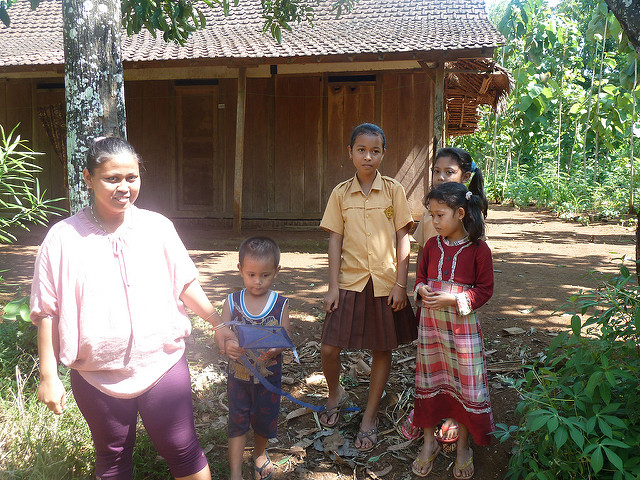Published: 2013
TAI Training Powerpoints
Published: 2013
TAI Training Powerpoints
Published: 2013
TAI Training Powerpoints
Published: 2011
TAI and ARTICLE 19 joint position paper leading up to Rio+20.

Published: 2011
Freedom of Information Tracking
Complex monitoring templates including online systems have been used by civil society groups all over the world to monitor and track the results of Freedom of information requests. However communities often need a simple tool to record what has happened to their Freedom of information requests once sent to government agencies. Methods to track the date of their requests, any responses by government agencies , transfer of requests and options for appeal are all important. The Indonesian Center for Environmental Law in partnership with the World Resources Institute has developed a simple tool to help community members monitor their FOI requests. The booklet was created as part of the Strengthening the Right to Information to Improve public health and the environment project (SHRIMP – EQ) funded by the Open Society Foundation.
Published: 2011
Freedom of Information Tracking
Complex monitoring templates including online systems have been used by civil society groups all over the world to monitor and track the results of Freedom of information requests. However communities often need a simple tool to record what has happened to their Freedom of information requests once sent to government agencies. Methods to track the date of their requests, any responses by government agencies , transfer of requests and options for appeal are all important. The Indonesian Center for Environmental Law in partnership with the World Resources Institute has developed a simple tool to help community members monitor their FOI requests. The booklet was created as part of the Strengthening the Right to Information to Improve public health and the environment project (SHRIMP – EQ) funded by the Open Society Foundation.
Published: 2011
Check out TAI’s Vol. 2 newsletter!
Published: 2011
Cette étude porte sur l’analyse de la participation publique dans le cadre de l’élaboration et la mise en œuvre du Code des Aires Protégées Malgache. Elle trouve son intérêt du fait de l’ Importance géographique des Aires Protégées à Madagascar (en termes de surface) d’où intérêt de l’analyse du texte de base légiférant la question.
Les objectifs de cette étude sont d’identifier/analyser les éléments du cadre juridique et institutionnel garantissant la participation du public dans l’élaboration et la mise en œuvre du COAP, Identifier et analyser les différentes lacunes du cadre juridique et des différents mécanismes de participation citoyenne dans l’élaboration et la mise en œuvre du COAP, analyser les pratiques sur l’accès à l’information du public dans le cadre de l’élaboration et de la mise en œuvre du COAP Fournir des recommandations
Published: 2011
Twelve Responding Governments
Attached you will find a full write-up of the responses from the responding governments.
Governments who responded:
Governments contacted, no response:
Published: 2011
The inclusion of procedural rights of access to information, public participationand access to justice in environmental decision-making are recognized in international treaties and soft law agreements as central to the sustainable development agenda. Since the 1990s, a number of Caribbean countries have enacted environmental legislation requiring the preparation of an Environmental Impact Assessment (EIA) prior to permitting significant developments . The extent to which procedural rights have been included within EIA provisions however is varied. There has been little analysis of the impact of the use by citizens of procedural rights in these EIA processes.
This paper examines the legislative framework for EIAs and citizen enforcement of procedural rights in the decision-making process for proposed developments in Jamaica and Belize. The legislative frameworks adopted by Belize and Jamaica are significantly different; with the former enacting comparatively comprehensive regulations to guide the EIA process and the latter dependent on internal guidelines. In both countries there has been documented failure in law and practice to deliver effective procedural rights. A review of recent court decisions in Belize and Jamaica illustrates the value of citizen enforcement as a means of safeguarding procedural rights in the conduct and review of EIAs as well as demonstrating the failure in compliance.
Published: 2011
Les industries minières sont considérées par le Gouvernement malagasy d’être des industries stratégiques pour le développement de Madagascar. Elles sont aussi sources d’impacts sociaux et environnementaux non négligeables. QIT Madagascar Minerals (QMM), détenue à hauteur de 80% par Rio Tinto et de 20% par l’Etat malgache représenté par l’Office des Mines National et des Industries Stratégiques (OMNIS), a mis en chantier une opération d’extraction de sables minéralisés, à Mandena, Taolagnaro dans la Région Anosy pour une durée de 20 à 25 ans. Le projet minier est localisé dans un environnement naturel très sensible avec un taux d’endémisme élevé et un écosystème littoral unique. L’étude de ce cas relatif à l’exploitation des sables minéraux (ilménite et zircon) à Fort-Dauphin se base alors sur les problématiques suivantes : y a-t-il une (des) initiative(s) du Gouvernement et de la compagnie minière pour l’accès du public à l’information sur le projet? Quelles sont les portées de celles-ci au niveau de la population ? L’objectif est d’identifier les lacunes juridiques, institutionnelles et les pratiques sur l’accès à l’information par rapport à l’environnement, la biodiversité et fournir des recommandations afin de combler ces lacunes.